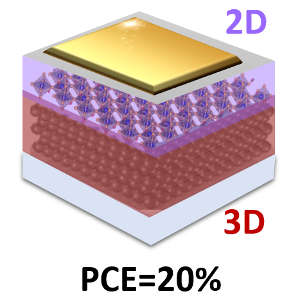Using AI to control energy for indoor agriculture
30 September 2024
Published online 5 September 2018
A low dimensional water-resistant coat increases stability and efficiency of solar cells.

Researchers1 from Qatar, Switzerland and Italy fabricated the material by allowing the self-assembly of two-dimensional perovskite on top of a three-dimensional perovskite in an inert atmosphere.
The composite perovskite did not decompose when kept in highly humid air for three days. The top layer of the 2D perovskite blocked water penetration into the 3D perovskite beneath it, preventing its degradation. Bare 3D perovskite completely degrades at a similar humidity.
Solar cells made using the composite perovskite showed 20 per cent efficiency in converting solar energy into electricity, and were able to consistently perform at this level for 200 hours. The top water-repelling layer contributes to this efficiency.
The composite perovskite could also be used to make optoelectronic devices such as light-emitting diodes and photodetectors, says study co-author Mohammad Khaja Nazeeruddin from École Polytechnique Fédérale Lausanne Valais Wallis in Switzerland.
The team next plans to optimize the composite material and probe it for other applications.
doi:10.1038/nmiddleeast.2018.103
Stay connected: